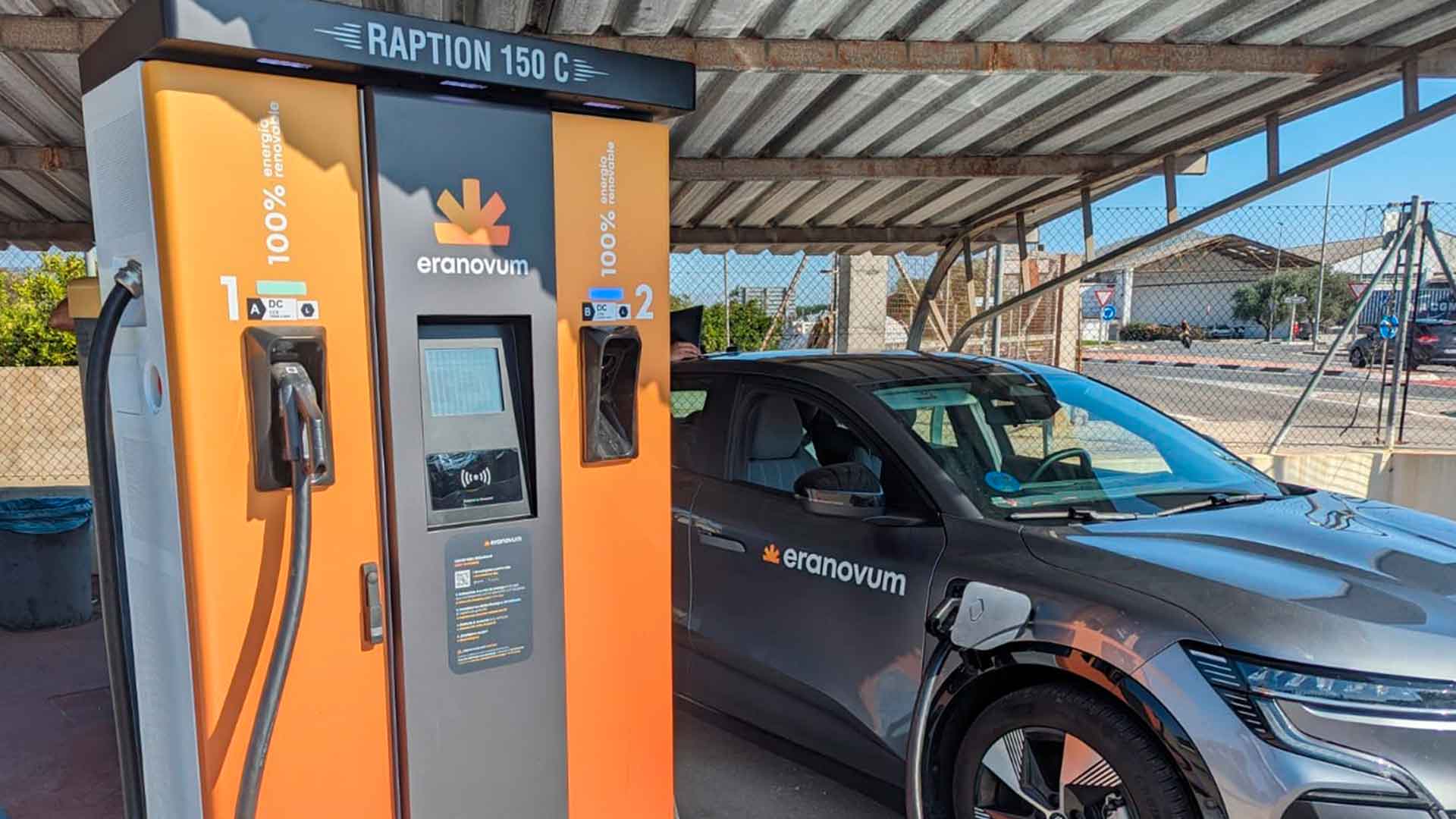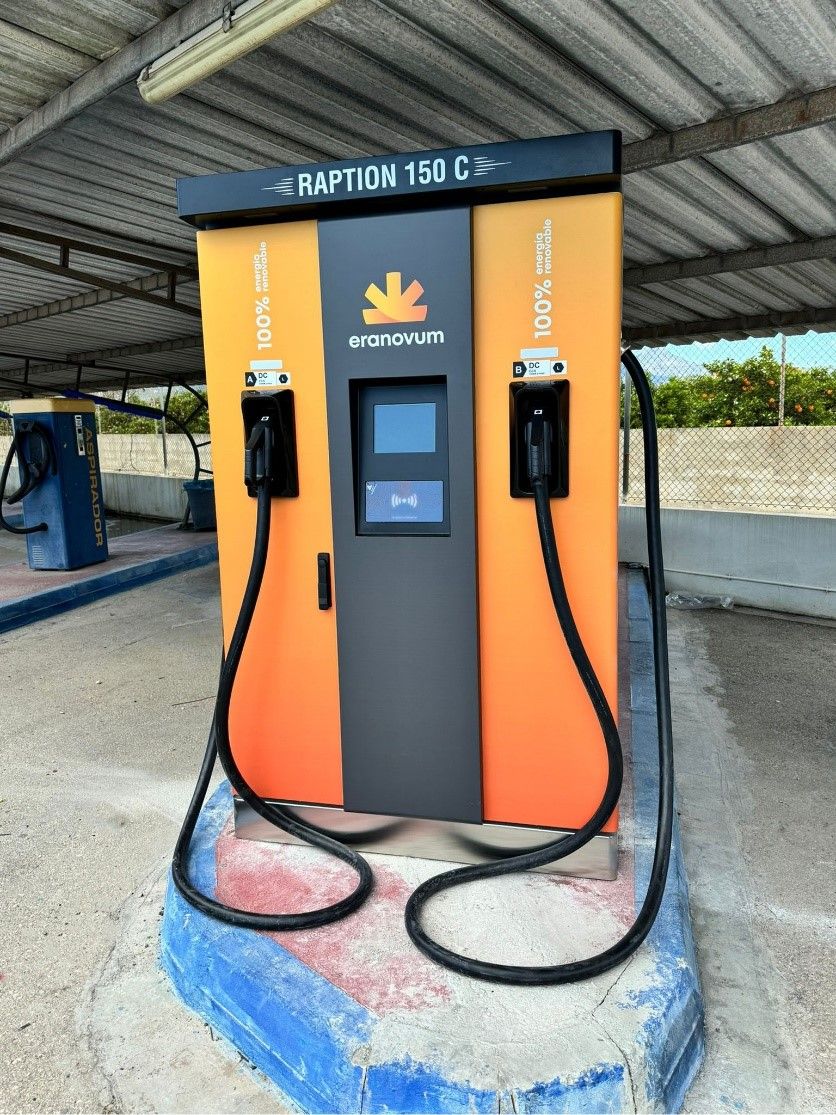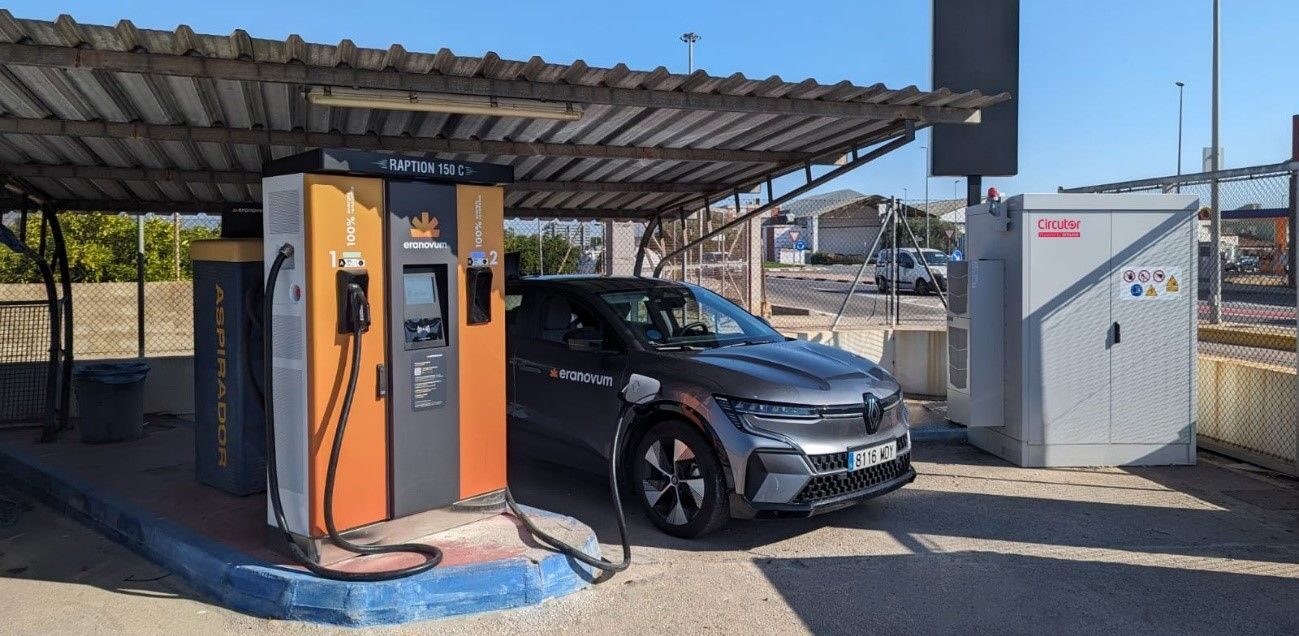
CIRCUTOR partnered with Eranovum to install a fast charging system at the Daimús Service Station in Valencia, exceeding the 15 kW power supply limitation by using a lithium battery energy storage system, the BAS-B73 (Circutor powered by Intilion). This system allows two electric vehicles to be charged simultaneously. The current installation will avoid approximately 90 tonnes of CO2 a year, and the combination of different energy sources managed by an advanced system, developed by Circutor for this installation, ensures efficient and sustainable charging.
Our customer, Eranovum, is a company dedicated to facilitating and improving the electric vehicle charging infrastructure. It has over 800 charging points and has plans to install almost 3000 across the country.
Eranovum has entrusted Circutor to provide charging services in an area of low urban density, and thus comply with the regulatory requirements at the Daimús Service Station, in Valencia. This installation has a 15-kW supply of electricity, which is the maximum available due to the situation of the grid, and the goal is to install a fast charging device, which requires a storage solution.
Eranovum identified its client's need to install fast charging points and provide service in areas with a low urban density but with high traffic. A good example of this is the Daimus service station, where the plan is to install a 100-kW Raption 150 device. But the big problem with this installation was having only a 15-kW connection.
To solve this problem, Circutor incorporated a lithium-battery energy storage system, the BAS-B73 (Circutor powered by Intilion). The BAS-B73 is a modular outdoor energy storage solution that connects in parallel with the grid and uses NMC (nickel-magnesium-cobalt) technology.
This technology allows the battery to fully discharge in one hour and it has a capacity of 73 kWh. It is a complete and simple device, easy to install because it only needs to be connected to AC, and it operates independently thanks to its protection and control systems.

This combination of different energy sources is made possible thanks to an advanced control system developed by Circutor specifically for this project: the EMS, an energy manager that also includes DLM. These hybrid energy sources managed by the EMS are:
This hybrid system manages energy efficiently by combining electric vehicle charging, battery storage and a connection to the electrical grid. In addition, the EMS developed for this project:
This project will allow for heavy charging sessions, being able to supply 10 to 100% to two electric vehicles simultaneously with an average range of 400 km. The recovery time for the next charge will depend on the grid connection, but it could provide six full charging sessions per day.
In the future, depending on the consumption profile, photovoltaic generation can be implemented and the power of the charging point can be increased, turning the project into a true 100% green charging hub.

The charging station will avoid approximately 125 tonnes of CO2 compared to a class-C rated vehicle. But the energy source, as it is an energy mix, will provide those 140 MWh needed, reducing the emissions avoided to 90 tonnes of CO2.
With these figures, a future projection for this installation and transforming it into a 100% green hub, apart from improving profitability, will increase decarbonization without taking into account the increase in charging sessions by future energy sources.
The hybridization of EVC + BESS + EMS + GRID is a solution for this project, but also a reality for future installations with grid limitations and a need for high-power charging in installations: away from the electrical system, with grid power limitations or with plentiful residual power available.
Completing these projects with photovoltaic generation is the best option and thanks to Circutor's BAS-B73 battery, photovoltaic canopies with charging and storage can be installed that are fully self-managed, elevating the project to our iconic PVing Charge system.

WRITTEN BY CIRCUTOR